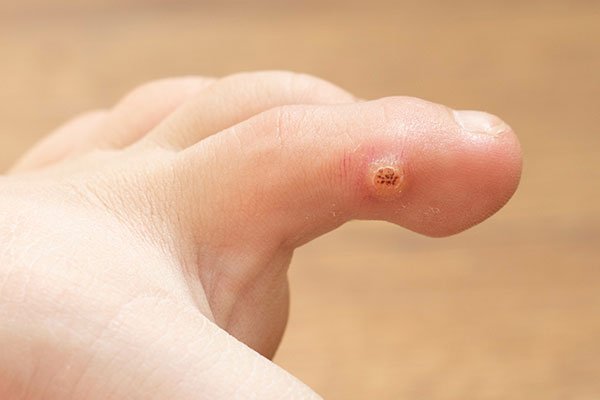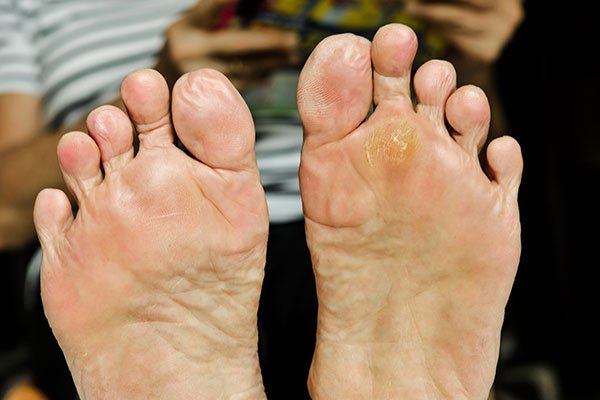Common warts may grow on your hands or other parts of your body, but plantar warts grow specifically on the soles of your feet.
Plantar warts are small growths on the bottom of your feet that look rather similar to calluses. However, they have nerve endings that end right below the hardened skin on your feet, which makes them painful to repeatedly step on as they grow.

Also known as benign growths, plantar warts are infections in the top layers of your skin caused by a human papillomavirus (HPV) strain. HPV often lurks in damp, closed environments like public restrooms and showers, and it spreads upon contact with your skin. It enters your skin through tiny cuts and breaks in the tissue, resulting in a fleshy growth that we commonly call a plantar wart. Usually, the high-pressure areas of your feet that warts grow on makes them rather painful and sensitive. To avoid contracting warts, we advise you to avoid touching existing warts and to wear shoes in public places like locker rooms, showers, etc.

It’s normal for your plantar warts to appear rough or grainy. Depending on the person, plantar warts may appear grey or brown, flattened or hardened, and they normally have a tiny black dot or bump in the middle that is a small clotted blood vessel.
It’s important to note that while warts can be unsightly and painful, they are noncancerous and non-life-threatening. Thick calluses may develop over your warts depending on what area of your foot they are located at, and this can make the wart even more uncomfortable when pressure is placed on it. Walking or standing on the lesion may become more painful over time, which is why it’s wise to treat plantar warts before this is the case. Without being treated, plantar warts often spread and multiply, which makes them difficult to remove.

Although it is difficult to truly remove plantar warts forever, it’s possible by investing in longer-term treatment. Home remedies are often ineffective, and we recommend first having a podiatrist inspect your wart to ensure it is a noncancerous spot and diagnose it.
After we determine that your lesion is a plantar wart and not a cancerous growth, your podiatrist can prescribe prescription strength-peeling medication, like salicylic acid, to remove your wart’s layers over time. Alternatively, you may decide to have a professional freeze the growth using liquid nitrogen to destroy it, or you can undergo immune therapy and have injections or medications to fight the HPV strain. An excision is also an option if other methods are unsuccessful. Keep in mind that you may have to undergo multiple treatments before your warts disappear due to the stubborn nature of the infection.

While you may be used to living with warts, it’s worth the investment in your self-care to remove them and any pain they cause. There are plenty of options available for you to treat the bumps on your feet, leaving your soles wart-free. To schedule an appointment for one of Martin Foot and Ankle’s podiatrists to examine what might be a plantar wart, contact us at (717) 757-3537 or send us a message via our website. We look forward to hearing from you.
